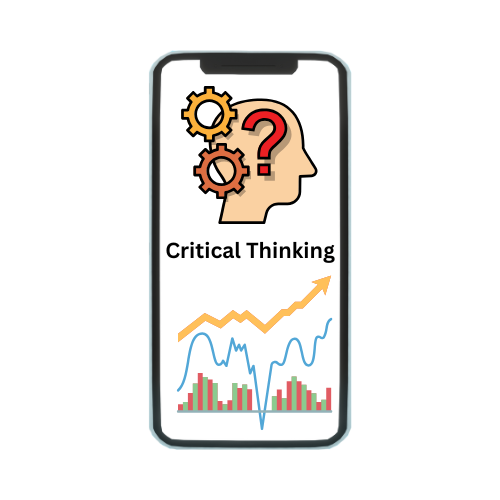The spillover effect refers to how economic events, actions, or policies in one area can indirectly influence or impact other sectors, regions, or countries. This concept is crucial in understanding interconnected financial markets and global economies. For instance, a financial crisis in one country can cause stock market declines and economic slowdowns in other nations, reflecting the spillover effect. Similarly, a large firm’s success or failure can affect related industries and supply chains. Spillover effects can be positive or negative, influencing variables like trade, investment flows, exchange rates, or interest rates, ultimately shaping broader economic outcomes and policymaking decisions.
Key Characteristics of Spillover Effects
- Indirect Impact: Unlike direct impacts, spillovers are secondary consequences that are not always intentional.
- Interconnectedness: The effect is more pronounced in highly interconnected systems like the global financial markets or integrated economies.
- Amplification: In some cases, spillovers can amplify initial shocks, turning localized issues into broader economic concerns.
Types of Spillover Effects
Economic Spillover
- Definition: When economic conditions or policies in one country or region affect others, often due to trade relationships, investment flows, or shared financial markets.
- Example: A recession in the United States can lead to reduced demand for exports from emerging economies, impacting their GDP growth.
- Significance: Economic spillovers are crucial for policymakers who need to consider how domestic decisions might impact global markets.
Financial Market Spillover
- Definition: Financial disturbances in one market can influence other markets or countries due to global capital flows and investor behaviour.
- Example: The 2008 global financial crisis, which began with the collapse of the US housing market, spread to other financial systems worldwide, leading to widespread economic downturns.
Factors Influencing It:
- Cross-border investments: Interconnected banking systems can transmit shocks across borders.
- Investor sentiment: Negative news in one market can trigger sell-offs in other unrelated markets due to risk aversion.
Corporate Spillover
- Definition: Actions by large firms can have a ripple effect on suppliers, competitors, and even unrelated industries.
- Example: The rise of tech giants like Apple and Google has spurred innovation in related sectors, such as app development and digital marketing.
- Negative Spillover: A large company going bankrupt can cause layoffs, reduced demand for suppliers, and loss of confidence in the sector.
Social and Environmental Spillover
- Definition: Social policies or environmental changes in one area can impact surrounding regions or communities.
- Example: Environmental degradation in one country can lead to cross-border pollution affecting neighbouring nations.
- Social Impact: Policies like increasing wages in one sector can pressure others to follow, impacting labour markets more broadly.
Examples of Spillover Effects
- Global Supply Chain Disruptions
During the COVID-19 pandemic, lockdowns in manufacturing hubs like China caused shortages of essential components, disrupting global supply chains in industries such as electronics, automotive, and pharmaceuticals. The spillover effect was felt worldwide as businesses faced production delays and rising costs.
- Monetary Policy Spillover
When the US Federal Reserve raises interest rates, it can lead to capital outflows from emerging markets as investors seek higher returns in the US. This can result in depreciating currencies, higher borrowing costs, and inflation in developing economies.
- Technology Spillover
The development of new technologies often leads to spillovers that benefit other industries. For example, advancements in artificial intelligence (AI) have spurred innovations in healthcare, finance, logistics, and manufacturing, enhancing productivity and efficiency.
How Spillover Effects Influence Policy and Decision-Making
- Central Banks: Central banks monitor spillover effects when designing monetary policy, especially in open economies where exchange rates and capital flows are influenced by external factors.
- Governments: Policy measures, such as trade tariffs or fiscal stimulus, are assessed for their potential to create positive or negative spillovers, both domestically and internationally.
- Corporations: Large firms consider spillover effects when making strategic decisions, as changes in their operations can impact suppliers, partners, and competitors.
Positive vs. Negative Spillover Effects
Type | Positive Spillover | Negative Spillover |
Economic | Growth in one country boosts global demand | Recession in a major economy affects global trade |
Financial | Capital inflows spur investment and growth | Financial contagion leads to stock market crashes |
Corporate | Innovations create new industries | Bankruptcy of a key firm disrupts supply chains |
Social/Environmental | Clean energy policies reduce global pollution | Cross-border pollution impacts neighbouring countries |
Factors That Influence Spillover Effects
- Degree of Interconnectedness: The more interconnected economies or markets are, the stronger the spillover effect.
- Market Sentiment: Negative news or shocks can spread quickly if investor confidence is low.
- Regulatory Frameworks: Countries with stronger financial regulations may be better insulated from external financial shocks.
- Geopolitical Relations: Tensions or alliances can influence the flow of spillover effects, especially in trade and investments.
Conclusion
The spillover effect is a critical concept in economics, finance, and policymaking. Understanding these effects is essential for anticipating how events in one area can influence others, helping policymakers and businesses mitigate risks and leverage potential benefits. By recognizing the interconnectedness of global systems, decision-makers can better prepare for the unintended consequences of their actions.





